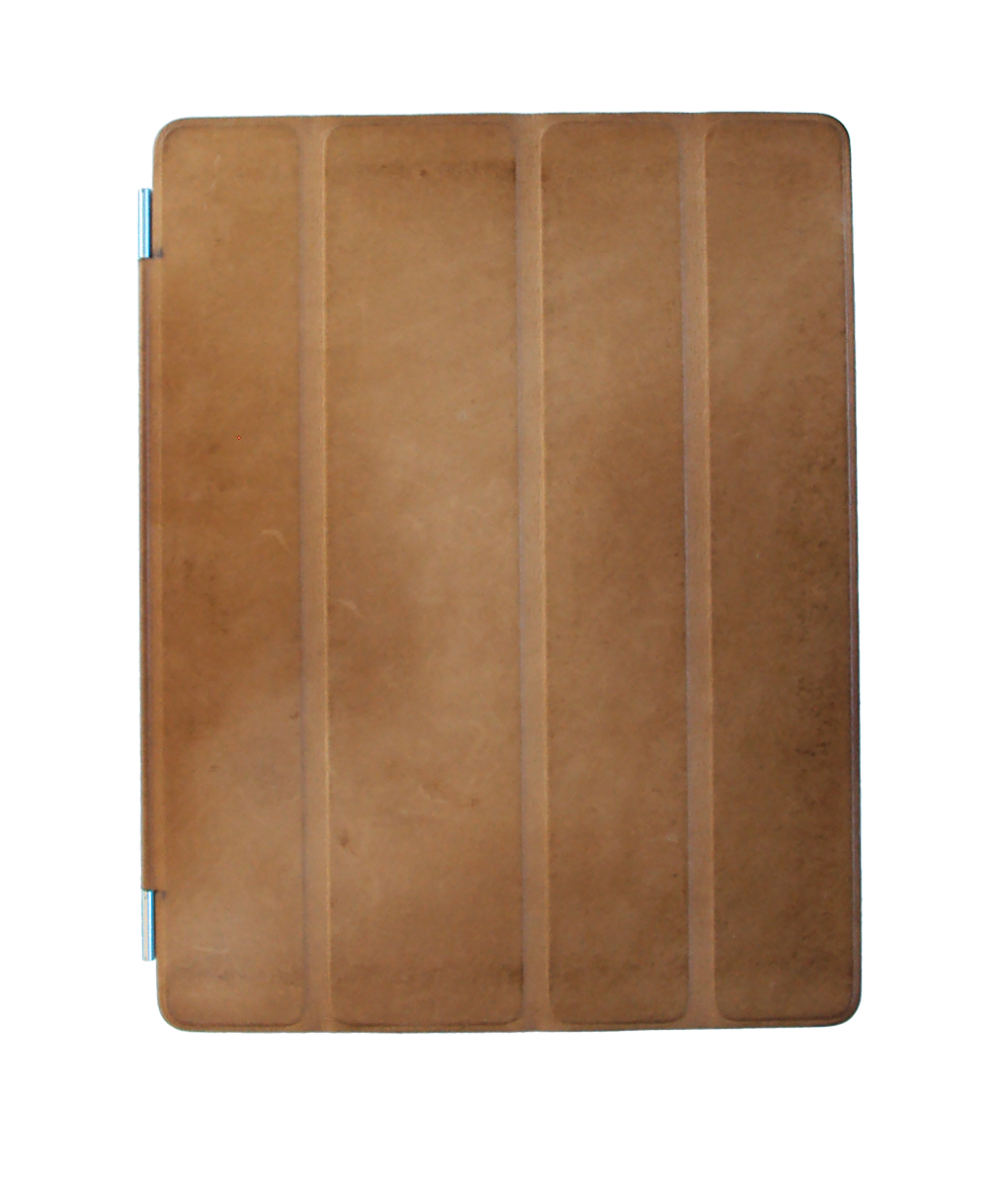
I’ve been using an Apple iPad 2 for a few months now, and have enjoyed it tremendously. One aspect of it that stands out is the deliberate imperfection that Apple has introduced into the design of the Smart Cover accessory. I’d go as far as to say that Apple has embraced Wabi Sabi, the Japanese aesthetic which accepts, and even demands, imperfection and transience as an important aspect of beauty.
The Smart Cover that I have on my iPad is leather. Out of the box, it wasn’t quite pristine, but had a lovely texture. In the last several months, though, it has acquired an uneven patina through daily use, along with more noticeable scuffs and marks. It’s no longer perfect, if it ever was, and it now provides a striking contrast to the aluminum and glass ‘perfection’ of the iPad. It completes the iPad, providing a visual warmth and a organic feel that the cover-less iPad lacks.
The unique imperfections have marked the iPad as ‘mine’ — distinct from an iPad that someone else might own — as effectively as the combination of apps, books, music, games, and other bits of data that I’ve installed/assembled/created on it.
Apple is, of course, aware of the inevitability of these ‘imperfections’. The packaging for the smart cover includes a notice: “The leather Smart Cover is crafted from high-quality, naturally treated material that gets its color from a rich aniline dye. Some color may rub off during use.” (Emphasis mine.)
Beautifully done.
